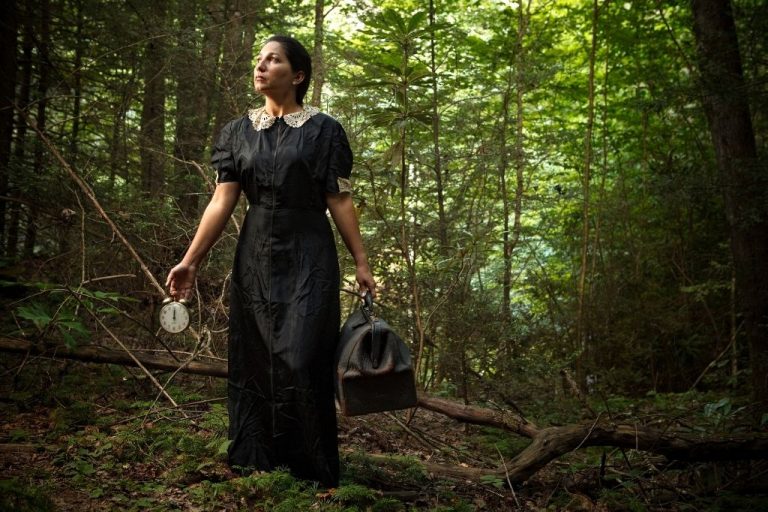Immunity – Boosting It

Improving Your Health Today, Boosts Your Immunity Today, Supporting Your Defense Against C-19 Today.
Terrain – Environment – Genes & Immunity
Every time the body makes a protein compound, for example an anti-inflammatory cytokine (message) or a pro-inflammatory cytokine, genes have to be activated or silenced; which protein is made depends on environmental signals. The biggest signals for genetic expression come from nutrition.1 That means every time you eat, you turn genes on and off. Eating junk-food has immediate ramifications, regardless of whether these are obvious.
In 2004 a study was published indicating that the nutritional status of the infected being (host) was significant to disease outcome. If the host was deficient in nutrients, not only was the immune response diminished but the genetic make-up of the virus changed, making it more virulent.2 In our quest for cures, it seems we have forgotten about the terrain that either gives advantage to viruses or inhibits them. The nature of the terrain is the health or otherwise of our bodies.
Improve the terrain of your body and the viruses will not be successful, even If you have high blood pressure, diabetes or excess body fat. Making small changes can send your body the signals for a healthier you – immediately.
Strategies for Enhancing Your Body’s Defense
- Metabolic and Nutritional Health. This will make you happier too. It is a fact.3
Concentrate on quality protein such as pastured meat and eggs, wild-caught fish, and lots of vegetables.4 This contributes to adequate micro-nutrients and minimizes refined and processed carbohydrates.5 In fact, a ketogenic diet has been suggested as a means stave off COVID-19 complications.1
Stopping the sodas, baking, bread, pasta, and muesli bars immediately boosts your immune system.
- Avoid alcohol
Stop the grog. Not only does this numb your mind, mitigating a healthy stress response, but it dampens your immune system too.6
- Exercise
It has all been said before.7 Even a single bout of exercise can boost your body’s anti-oxidant status.8 Keep it moderate and ideally outside.9,10 Listen to your body, should you start to feel tired or unwell to avoid decompensation.
- Get into nature9
Staying inside and locked away is bad for your health. We all know this; the reductionist experts know this. Don’t do it.
- Sleep11
Again, this is said ad nauseum. The Netflix series is not worth it. The COVID mantra should change to: Get to sleep.
- Laughter,12 especially with friends.13
- Meditation
Yes, meditation helps to prevent respiratory infections14
- Earthing
This is the most “out there” recommendation but is based on the role of positively charged “free radicals” that accumulate at the site of inflammation and aid in destruction of microbes and host tissue. If this system is unable to be neutralized, inflammation and oxidation continue15-17 The Earth’s surface is electrically conductive with a negative potential that is maintained by the global atmospheric electrical circuit.18 Physically accessing this negative potential by absorption of the free electrons on the Earth’s surface neutralizes free radicals, reducing inflammation and improving immune response.
Isolating from the Earth is making us weaker. Try it – walking barefoot on the beach, on the grass, getting your (ungloved) hands in the earth.
- Sunlight and fresh air
Air conditioning may enhance droplet transmission of SARS-CoV-2,19 while increasing natural ventilation and opening windows improves air-changes and reduces transmission of infections.20 Early data suggests that Coronavirus is quickly destroyed by sunlight.21
More reason to get outside, assuming a low pollution environment.
- Supplementation
Research on supplementation for prevention of disease is fraught on many levels. Suffice it to say, rather than absolutes, risks and benefits need to be considered. Generally, most nutritional interventions tip the scale to potential benefits. To date, no oral supplements have been studied directly for effect on COVID-19 or SARS-CoV-2. However, supplements listed have supporting research on immune enhancement or effect in other viral infections. This list is by no means an exhaustive list.
Vitamin D
Vitamin D is being researched with regard to its role in maintaining a healthy immune system and decreasing inflammation.22 Furthermore, in a large review of clinical studies, supplementation of Vitamin D particularly but not limited to those who are Vitamin D deficient was shown to decrease the incidence of respiratory tract infections.23 Taking very large doses of Vitamin D can be harmful to health, so stick to the recommended doses.
Vitamin C
This essential vitamin has generated more controversy than any other, to the point of religious fervor amongst pro- and anti-Vitamin C believers. We really do not want any believers in science, just questioners.
A review from the University of Otago, indicates that Vitamin C deficiency impairs immunity and increases susceptibility to infections.24 Furthermore, infections can result in low Vitamin C levels. Supplementing lower doses may prevent respiratory and other infections, while higher doses are required for treatment.24
Zinc
Zinc is essential in a healthy immune system with zinc deficiency leading to excess inflammation and worse outcomes in infections.25 Zinc deficiency, especially in the elderly is common and is certainly a regular finding in my clinic population. In developing countries, infectious diseases such as pneumonia have been prevented by Zinc supplementation.26 While results are mixed, Zinc supplementation probably decreases the duration of the common cold.27 Long term high doses are not recommended.
Selenium
Viruses actually use selenium to protect their own genes, so having low selenium may sound like a good idea. However, it turns out that if the infected host is low in selenium, the virus mutates and becomes more virulent, resulting in much more inflammation. While no data has been published on SARS-CoV-2, this effect has been seen in other corona viruses. Furthermore, when dietary selenium was increased, immunity was improved.28 Selenium can be toxic in excess, so so stick to the recommended doses.
N-Acetyl-Cysteine (NAC)
NAC is a derivative of the conditionally essential amino acid, Cysteine. The body uses Cysteine to make Glutathione, a major anti-oxidant. NAC thus provides anti-oxidant capacity and can act as a direct anti-oxidant supporting the body during stress, infection, inflammation, and toxic exposure. Intravenous NAC is used in emergency departments to treat Acetaminophen (Paracetamol) overdose.
NAC has a high affinity for lung tissue, where it thins the mucous by breaking up sulfur bonds and acts as an expectorant helping to bring up mucous and other material from the lungs. NAC has been used to help decrease the effects of influenza29 and has been shown to decrease the lung damage caused by swine flu in mice.30
Probiotics
The gut controls everything. We keep hearing about the gut-brain axis but researchers are looking at a number of other axes, including the gut-lung axis.31 Research is ongoing, but species of Lactobacilli and Bifidobacterium may help to prevent against respiratory infections.32
Herbs
A number of different herbal remedies have been traditionally used for prevention and treatment of the common cold and flu-like illnesses. Studies are mixed in whether these agents are beneficial. This may be partially due to the large number of differing proprietary products studied and poorly designed studies. A number of herbs have only been studied in vitro (in a test tube). Be this as it may, herbs generally have a low side-effect profile. Plant extracts that may be considered for prevention and treatment include:
Echinacea,33BlackCohosh,34Phellodendron,34Glycyrrhizin,35Resveratrol,36Bupleurum,37Sulforaphane,38Elderberry,39,40Andrographus39 and Curcumin.41
Melatonin
Melatonin has been reported as having direct anti-viral actions due to its anti-inflammatory, anti-oxidation and immune enhancing features and has been suggested as an add-on treatment for COVID-19.42
Conclusion
- Your body holds the cure for COVID-19 and all the other viruses and microbes in our environment and is able to mount a response, even to the mutated ones.
- You can enhance your immunity and support your body’s in-built defenses.
- There are valid treatments for COVID-19.
References
- Kamepalli, R.K.K., B. How Immune T-Cell Augmentation Can Help Prevent COVID-19: A Possible Nutritional Solution Using Ketogenic Lifestyl. University of Louisville Journal of Respirtory Infections 4(2020).
- Beck, M.A., Handy, J. & Levander, O.A. Host nutritional status: the neglected virulence factor. Trends Microbiol 12, 417-423 (2004).
- Semenkovich, K., Brown, M.E., Svrakic, D.M. & Lustman, P.J. Depression in type 2 diabetes mellitus: prevalence, impact, and treatment. Drugs 75, 577-587 (2015).
- Hosseini, B., et al. Effects of fruit and vegetable consumption on inflammatory biomarkers and immune cell populations: a systematic literature review and meta-analysis. Am J Clin Nutr 108, 136-155 (2018).
- Butler, M.J. & Barrientos, R.M. The impact of nutrition on COVID-19 susceptibility and long-term consequences. Brain, Behavior, and Immunity (2020).
- Sarkar, D., Jung, M.K. & Wang, H.J. Alcohol and the Immune System. Alcohol research : current reviews 37, 153-155 (2015).
- Martin, S.A., Pence, B.D. & Woods, J.A. Exercise and respiratory tract viral infections. Exercise and sport sciences reviews 37, 157-164 (2009).
- Yan, Z. & Spaulding, H.R. Extracellular superoxide dismutase, a molecular transducer of health benefits of exercise. Redox Biol 32, 101508 (2020).
- Franco, L.S., Shanahan, D.F. & Fuller, R.A. A Review of the Benefits of Nature Experiences: More Than Meets the Eye. International journal of environmental research and public health 14, 864 (2017).
- Thompson Coon, J., et al. Does participating in physical activity in outdoor natural environments have a greater effect on physical and mental wellbeing than physical activity indoors? A systematic review. Environ Sci Technol 45, 1761-1772 (2011).
- Besedovsky, L., Lange, T. & Haack, M. The Sleep-Immune Crosstalk in Health and Disease. Physiol Rev 99, 1325-1380 (2019).
- Strean, W.B. Laughter prescription. Can Fam Physician 55, 965-967 (2009).
- Holt-Lunstad, J., Smith, T.B., Baker, M., Harris, T. & Stephenson, D. Loneliness and social isolation as risk factors for mortality: a meta-analytic review. Perspect Psychol Sci 10, 227-237 (2015).
- Barrett, B., et al. Meditation or Exercise for Preventing Acute Respiratory Infection: A Randomized Controlled Trial. The Annals of Family Medicine 10, 337-346 (2012).
- Mousa, H.A.-L. Prevention and Treatment of Influenza, Influenza-Like Illness, and Common Cold by Herbal, Complementary, and Natural Therapies. J Evid Based Complementary Altern Med 22, 166-174 (2017).
- Oschman, J.L. Charge transfer in the living matrix. J Bodyw Mov Ther 13, 215-228 (2009).
- Sokal, K. & Sokal, P. Earthing the human body influences physiologic processes. Journal of alternative and complementary medicine (New York, N.Y.) 17, 301-308 (2011).
- Chevalier, G., Sinatra, S.T., Oschman, J.L., Sokal, K. & Sokal, P. Earthing: health implications of reconnecting the human body to the Earth’s surface electrons. Journal of environmental and public health 2012, 291541-291541 (2012).
- Lu J, G.J., Li K, Xu C, Su W, Lai Z, et al. 2020. https://doi.org/10.3201/eid2607.200764. COVID-19 outbreak associated with air conditioning in restaurant, Guangzhou, China,. Emerg Infect Ds (2020).
- Escombe, A.R., Ticona, E., Chávez-Pérez, V., Espinoza, M. & Moore, D.A.J. Improving natural ventilation in hospital waiting and consulting rooms to reduce nosocomial tuberculosis transmission risk in a low resource setting. BMC Infectious Diseases 19, 88 (2019).
- Bukhari, Q.J., Yusuf (March 17, 2020). Available at SSRN: . Will Coronavirus Pandemic Diminish by Summer? (2020).
- Sassi, F., Tamone, C. & D’Amelio, P. Vitamin D: Nutrient, Hormone, and Immunomodulator. Nutrients 10(2018).
- Martineau, A.R., et al. Vitamin D supplementation to prevent acute respiratory tract infections: systematic review and meta-analysis of individual participant data. Bmj 356, i6583 (2017).
- Carr, A.C. & Maggini, S. Vitamin C and Immune Function. Nutrients 9(2017).
- Gammoh, N.Z. & Rink, L. Zinc in Infection and Inflammation. Nutrients 9(2017).
- Bhutta, Z.A., et al. Prevention of diarrhea and pneumonia by zinc supplementation in children in developing countries: pooled analysis of randomized controlled trials. Zinc Investigators’ Collaborative Group. J Pediatr 135, 689-697 (1999).
- Science, M., Johnstone, J., Roth, D.E., Guyatt, G. & Loeb, M. Zinc for the treatment of the common cold: a systematic review and meta-analysis of randomized controlled trials. Canadian Medical Association Journal 184, E551-E561 (2012).
- Harthill, M. Review: micronutrient selenium deficiency influences evolution of some viral infectious diseases. Biological trace element research 143, 1325-1336 (2011).
- De Flora, S., Grassi, C. & Carati, L. Attenuation of influenza-like symptomatology and improvement of cell-mediated immunity with long-term N-acetylcysteine treatment. Eur Respir J 10, 1535-1541 (1997).
- Zhang, R.H., et al. N-acetyl-l-cystine (NAC) protects against H9N2 swine influenza virus-induced acute lung injury. Int Immunopharmacol 22, 1-8 (2014).
- Samuelson, D.R., Welsh, D.A. & Shellito, J.E. Regulation of lung immunity and host defense by the intestinal microbiota. Front Microbiol 6, 1085 (2015).
- Bermon, S., et al. The microbiota: an exercise immunology perspective. Exerc Immunol Rev 21, 70-79 (2015).
- Ross, S.M. Echinacea purpurea: A Proprietary Extract of Echinacea purpurea Is Shown to be Safe and Effective in the Prevention of the Common Cold. Holistic nursing practice 30, 54-57 (2016).
- Kim, H.Y., et al. In vitro inhibition of coronavirus replications by the traditionally used medicinal herbal extracts, Cimicifuga rhizoma, Meliae cortex, Coptidis rhizoma, and Phellodendron cortex. J Clin Virol 41, 122-128 (2008).
- Cinatl, J., et al. Glycyrrhizin, an active component of liquorice roots, and replication of SARS-associated coronavirus. Lancet 361, 2045-2046 (2003).
- Lin, S.C., et al. Effective inhibition of MERS-CoV infection by resveratrol. BMC Infect Dis 17, 144 (2017).
- Cheng, P.W., Ng, L.T., Chiang, L.C. & Lin, C.C. Antiviral effects of saikosaponins on human coronavirus 229E in vitro. Clin Exp Pharmacol Physiol 33, 612-616 (2006).
- Meyer, M. & Jaspers, I. Respiratory protease/antiprotease balance determines susceptibility to viral infection and can be modified by nutritional antioxidants. Am J Physiol Lung Cell Mol Physiol 308, L1189-1201 (2015).
- Cui, Q.H., C.; Ji, X.; Zhang, W.; Zhang, F.; Wang, L. Possible Inhibitors of ACE2, the Receptor of 2019-nCoV. Preprints (2020).
- Zakay-Rones, Z., et al. Inhibition of several strains of influenza virus in vitro and reduction of symptoms by an elderberry extract (Sambucus nigra L.) during an outbreak of influenza B Panama. Journal of alternative and complementary medicine (New York, N.Y.) 1, 361-369 (1995).
- Dai, J., et al. Inhibition of curcumin on influenza A virus infection and influenzal pneumonia via oxidative stress, TLR2/4, p38/JNK MAPK and NF-κB pathways. Int Immunopharmacol 54, 177-187 (2018).
- Zhang, R., et al. COVID-19: Melatonin as a potential adjuvant treatment. Life Sci 250, 117583 (2020).






7 Comments
Comments are closed.